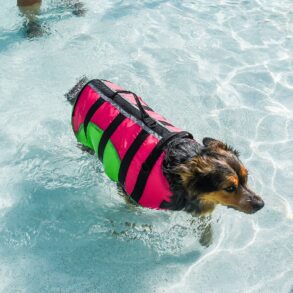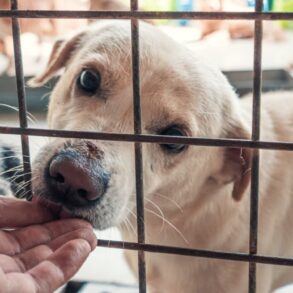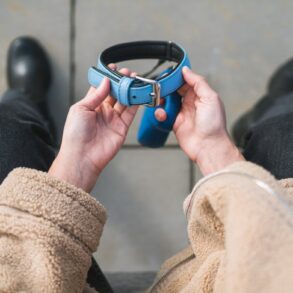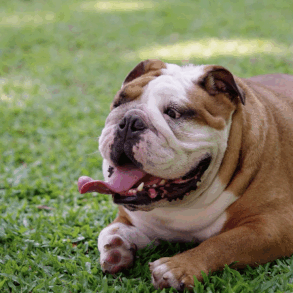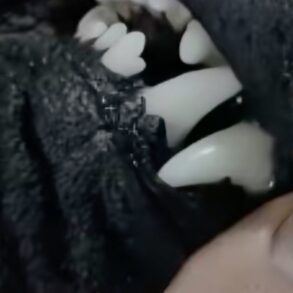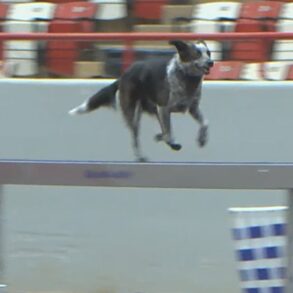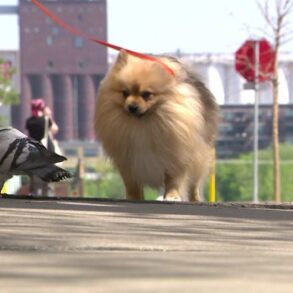
Your dog spends hours each day curled up in the same spot, which means their cozy bed is likely packed with dirt and bacteria you can’t even see. Even if you’re diligent about keeping your pup clean, dog beds steadily collect fur, saliva, sweat and dander—all of which can cause odors, trigger allergies and irritate your dog’s skin. Veterinarians and cleaning experts emphasize that knowing how to clean a dog bed properly involves more than just occasionally washing the removable cover. Most pet owners, they say, underestimate how frequently and thoroughly a dog bed should be cleaned to keep it comfortable, hygienic and safe.
“In general, dogs tend to get into a variety of stinky things when they go outside to use the restroom or go for walks,” says Dr. Jacqueline Brister, a veterinary consultant with Embrace Pet Insurance. “Even healthy, fully vaccinated dogs kept on year-round flea, tick and parasite preventives can bring in enough dirt and grime to warrant regularly cleaning their bedding at least once every couple of weeks.” As someone who’s spent nearly a decade covering pet-care products (and even longer caring for my own dogs), I’ve learned through trial and error which cleaning methods and products actually work—and I’ve made sure every recommendation here is veterinarian-approved and safe for your pup. The steps for washing removable covers, cleaning foam inserts and dealing with beds labeled “spot-clean only” aren’t complicated, but each requires a slightly different approach.
How To Clean A Dog Bed: A Step-By-Step Guide
Vacuum Loose Dirt And Pet Hair
Before you unzip anything, you’ll want to shake off the bed and get rid of excess debris. “Start with a vacuum to remove the majority of the hair and dirt,” says Jessica Gonzalez, cleaning expert and Chief Operating Officer at Sparkly Maid San Antonio. She recommends using a handheld vacuum specifically made for pet hair, like the Black+Decker Furbuster, which does a better job at removing fur, crumbs and dirt from corners and seams.
For embedded pet hair that’s difficult to remove, follow up with the ChomChom Reusable Pet Hair Remover. Dog owners love this reusable lint roller because it lifts stubborn pet hair in just a few seconds, doesn’t take up much storage space and doesn’t require batteries or replacement sheets. And if you still notice leftover hair, Gonzalez suggests using a slightly damp rubber glove: “Just rub it across the surface and it will pick up what the vacuum missed.”
Remove And Pre-Treat The Cover
Carefully unzip the cover and pull it off the foam insert, then give it a quick once-over to check for any stains or discoloration. If you see something that needs extra attention, lightly spray it with a pet-safe stain remover.
I like the Rocco & Roxie Stain & Odor Eliminator because it breaks down stains and removes odors rather than just covering them up. (Gonzalez also specifically recommends this enzyme-based stain remover because it’s gentle on your dog’s skin and respiratory system.) Blot the area gently with a clean cloth instead of rubbing, so the stain will lift without damaging the fabric.
Wash The Removable Cover
When washing your dog’s bedding, always choose a gentle, fragrance-free detergent. Veterinarians consistently recommend using detergents without dyes or additives, like Seventh Generation, to minimize the risk of irritating your dog’s sensitive skin. Animal behaviorist Michelle Bernstein also notes that consistency in your choice of detergent matters: “Use the same laundry detergent and avoid making other unnecessary changes,” she says. “Dogs, just like humans, don’t like change.”
If odors are especially stubborn, which is common if your pup spends a lot of time outside or with other dogs, try adding a pet-specific laundry booster like Skout’s Honor Laundry Booster Stain & Odor Removal Additive. From there, follow the manufacturer’s instructions for washing temperature and drying method to keep the cover in good condition.
Clean The Bed Insert
You usually can’t put the foam insert itself in the washing machine, but there are other easy ways to keep it clean. Gonzalez recommends sprinkling baking soda generously over the insert and letting it sit for a few hours to absorb odors, then vacuuming it up thoroughly. A handheld steamer also works well to gently sanitize foam without soaking it; just be careful not to get the insert too wet because excessive moisture can encourage mold or damage the bed. After cleaning, let the insert dry completely in a well-ventilated spot (ideally outside in the sun) to prevent mold growth or lingering odors.
What If Your Dog Bed Is Spot-Clean Only?
Some dog beds are labeled “spot-clean only,” which means you can’t remove the cover and toss it in the washing machine. Many pet owners don’t realize how impractical this is until their dog comes inside with wet paws after a rainy walk or throws up unexpectedly on the bed. Cleaning experts and veterinarians advise against choosing these types of beds because they’re tough to keep clean and tend to trap odors and bacteria over time. “When buying a new bed, always buy one with a removable cover,” says Gonzalez. “It will make your life so much easier.”
If you already own a bed that’s hard to wash, there’s no need to replace it entirely; an easy solution is to get a washable, waterproof dog bed cover. These covers come in a variety of sizes, slip easily over your current bed and help protect against messes. And they can be especially helpful if you have a puppy or senior dog who’s prone to accidents or if you’re dealing with a large, bulky bed that’s a hassle to clean regularly.
How Often Should You Clean Your Dog’s Bed?
Cleaning your dog’s bed regularly helps prevent odors and keeps bacteria buildup and allergies under control. Veterinarians generally recommend washing removable covers at least every two weeks, but Brister emphasizes that you might need to wash bedding more often in certain situations. “If your pet has recently been sick—such as with stomach issues, a urinary tract infection or a respiratory illness—or if they have skin, eye or ear problems, consider washing bedding every week or even more frequently,” she says.
Foam inserts typically need a deep clean quarterly, though you might have to do it more regularly if your dog has allergies, sensitive skin or spends a lot of time outside.
When To Replace Your Dog Bed Instead Of Cleaning It
Even if you’ve done a great job cleaning your dog’s bed, at some point it’ll probably make sense to replace it. Veterinarians say it’s usually time for a new bed if you notice:
- Odors that stick around even after multiple washes.
- Visible damage like flattened padding or ripped seams.
- Significant wear that makes the bed less supportive or comfortable for your pup.
Remember: Replacing your dog’s bed when it’s worn out isn’t only about looks. It’s about making sure your dog stays comfortable, safe and well-supported over the long term. Check out our top recommendations for the best dog beds and the best orthopedic dog beds if you and your pup are in the market for something new.
Meet The Experts
Jacqueline Brister, DVM, is a veterinarian and veterinary consultant at Embrace Pet Insurance, specializing in pet health education and preventive care. With over a decade of experience as both an emergency clinician and veterinary medical writer, Dr. Brister has treated countless pet health issues that could’ve been prevented with better owner education. She received the ACVIM Award for Compassion in Oncology upon her graduation from Mississippi State University’s College of Veterinary Medicine, and founded B-Squared Medical Writing to further her mission of empowering pet owners with clear, practical health resources.
Michelle Bernstein, M.S., M.A., ACAAB, is an animal behaviorist and supervisor at VCA Animal Hospitals, holding master’s degrees in Animal Behavior from Hunter College and Veterinary Forensic Medicine from the University of Florida. With nearly 20 years of experience studying pet behavior, Bernstein focuses on safe and effective ways for humans and pets to live comfortably together. She shared insights into how regular cleaning affects dog behavior and comfort, and offered expert advice on avoiding stress and behavioral issues that can result from frequent changes in your dog’s environment.
Jessica Gonzalez is a cleaning expert and the Chief Operating Officer at Sparkly Maid San Antonio. Gonzalez offered simple and realistic cleaning methods that pet owners can easily incorporate into their routines, including how to remove tough pet hair, dirt and odors from dog beds. She also recommended specific pet-safe cleaning products she regularly uses and trusts.
Kelly O’Sullivan, the author of this story, is Forbes Vetted’s home and kitchen editor. She’s covered pet-care products professionally for nearly a decade and has cared for dogs her entire life. Kelly combined her firsthand experiences keeping dog beds clean with expert input to ensure every recommendation in this guide is practical and safe for pets.
This post was originally published on this site be sure to check out more of their content.










